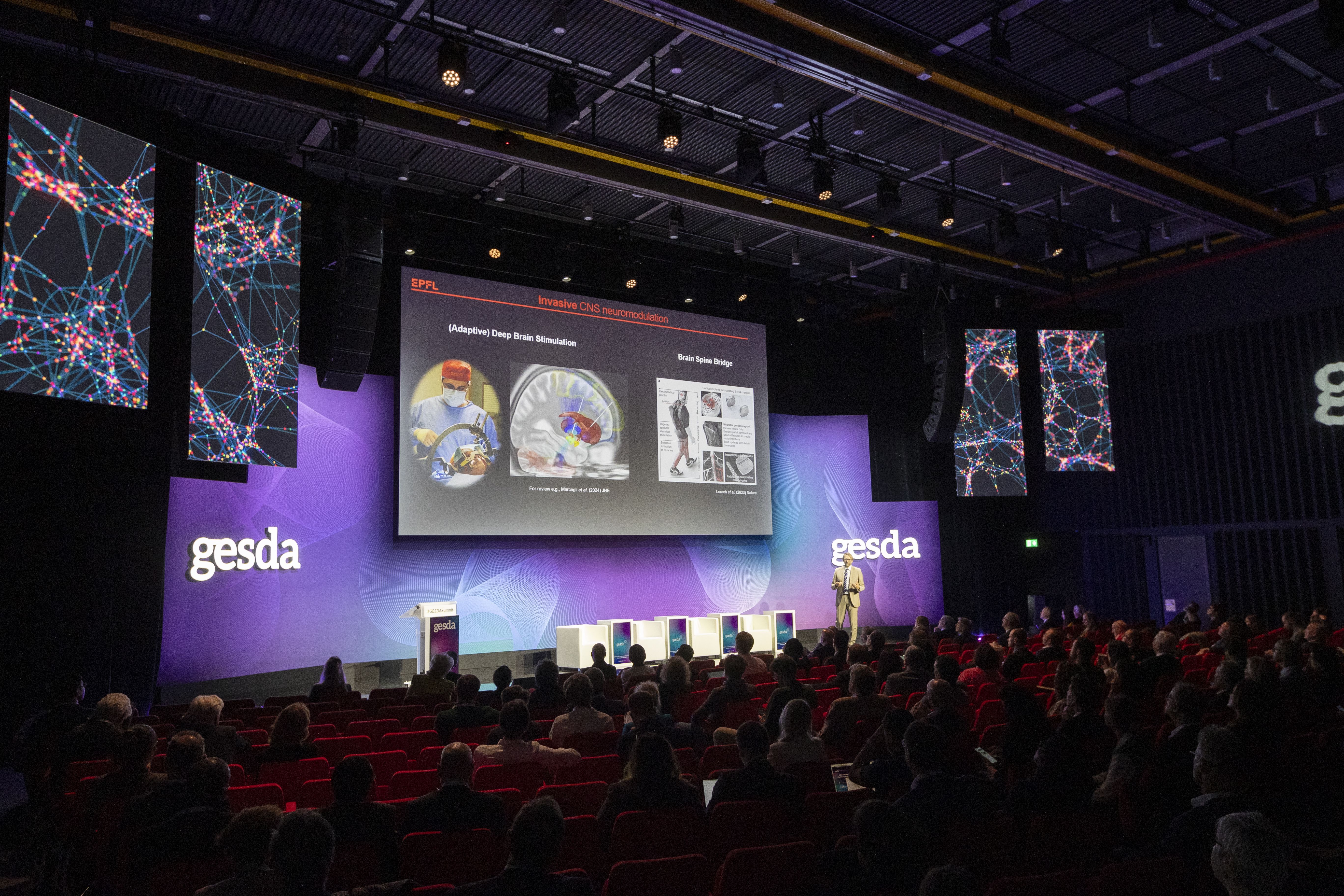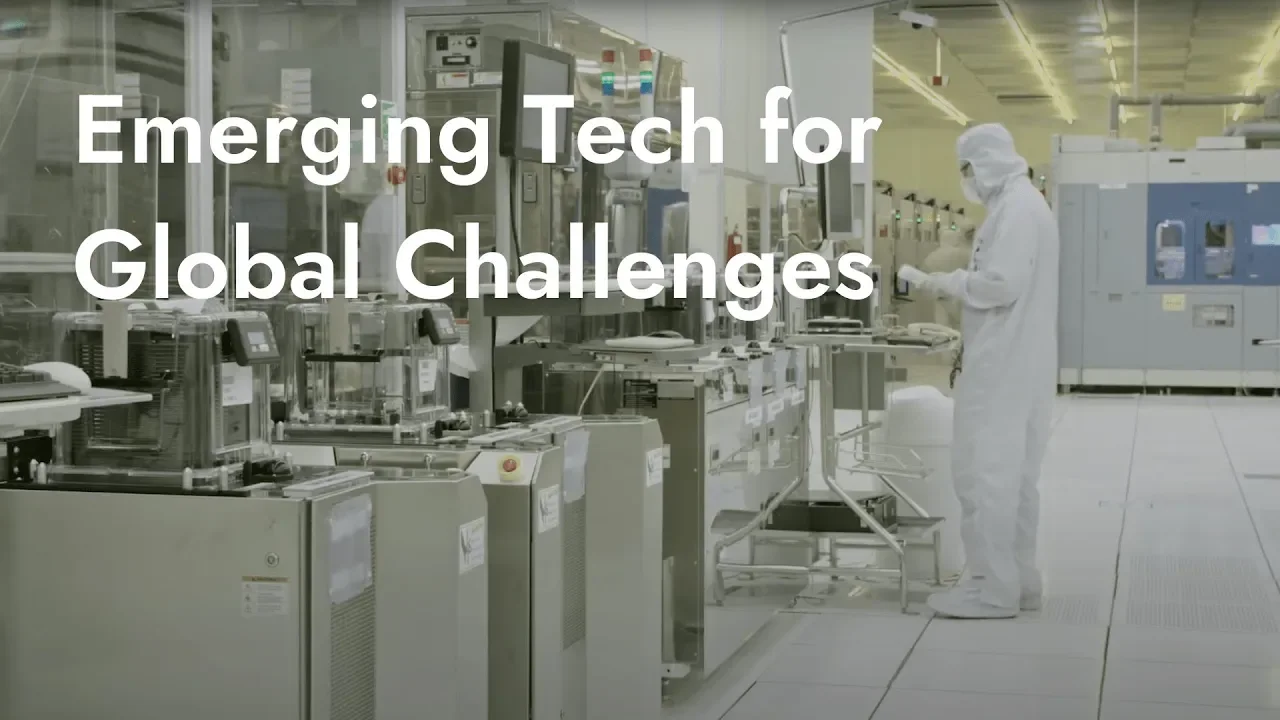The session focused on advancing neurotechnology to safeguard individual rights while ensuring accessibility. It explored how academia, biotech firms, and regulatory bodies can work together to bring advances in this field to a global audience while managing both opportunities and potential ethical dilemmas.
The following is the rapporteur report of an expert discussion held during the 2024 GESDA Summit. The author is a Villars Fellow.
Ideas from the Speakers
The Scope and Promise of Neurotechnologies
The first speaker opened the discussion by addressing the scale of brain disorders in the 21st century, such as attention deficit hyperactivity disorder, Alzheimer’s, and Parkinson’s. He stated that current neurotechnologies, especially personalized neuromodulation, present exciting new possibilities but also profound challenges in accessibility. Invasive methods like adaptive deep brain stimulation offer transformative results for patients but remain out of financial and logistical reach for many. Novel, non-invasive options such as transcranial-focused ultrasound are a promising alternative that can enhance memory and learning. He highlighted that making home-use neurotechnology feasible will require collaboration across multiple sectors to overcome existing logistical, financial, and ethical barriers.
Another speaker presented a different angle by demonstrating that neurotechnologies can improve mental health through affordable, accessible electroencephalography (EEG) systems, like Muse’s headband. Muse’s device allows users to track brain health at home. This expert’s focus on real-time brain feedback for meditation, sleep monitoring, and the potential for future stroke prediction illustrates how neurotechnology is becoming a daily tool for mental wellness, allowing individuals to monitor brain activity outside of clinical settings. Athletes who prioritize mental training may see this device as a tool of the future for enhancing mental health. However, the speaker cautioned that these advances require transparent science communication and user education to ensure people understand and use the data provided by Muse appropriately, while minimizing the risk of misinformation.
The Urgency for Global Cooperation and Diplomacy
A speaker shifted the focus to the role of policy in neurotechnology’s global future. With medical science becoming increasingly politicized, he advocated for an international framework to ensure neurotechnologies are developed ethically and in accordance with universal safety standards. Without these, the risk of technologies being weaponized or limited to wealthier regions could become a daunting reality, exacerbating the technology gap between the US and Europe. To prevent neurotechnologies from becoming instruments of inequality, he called for inclusive international diplomacy that could help bridge technological divides and promote the equitable distribution of neurotechnological benefits.
Inclusivity and the Future of Neurodegenerative Disease Treatment
Another speaker’s insights underscored the transformative potential of neurotechnology in treating neurodegenerative diseases, such as Alzheimer’s and Parkinson’s. His research into ultrasound technologies demonstrates their potential to cross the brain–blood barrier, enabling treatments that were previously impossible. However, he noted that these diseases typically manifest long before they are clinically diagnosed, meaning early intervention is crucial. The integration of neurotechnology into preventive care could open a new era of treatment in which neurodegenerative progression is identified and managed proactively. Nevertheless, he cautioned that these technologies must be applied equitably and urged for diverse datasets to ensure that advances in neurotechnology do not widen existing healthcare inequalities.
Building Trust and Accessibility through a Stakeholder-Driven Approach
One of the recurring themes throughout the GESDA Summit was the importance of a multistakeholder approach involving communities, policymakers, technologists, and healthcare providers. This approach, as a speaker reiterated, is essential for building trust, which in turn is critical for neurotechnology’s widespread acceptance. By involving end users early in the design and implementation process, developers can better understand and address the real-world needs of those with neurological conditions. Many advanced neurotechnologies are approaching market readiness but continue to face barriers, particularly in affordability and end-user design. The speaker highlighted the importance of considering the socioeconomic dimensions while arguing that early engagement with affected communities and an inclusive approach to design can help build trust and prevent the abandonment of these technologies. This perspective reinforces the need for interdisciplinary and intergenerational approaches in neuroscience for more accessible solutions. By creating technology that is responsive to the needs of those living with neurological disorders, developers can reduce health-care costs and improve quality of life.
Reflections on the Path Forward
Overall, the session emphasized that while neurotechnology has the power to transform how we understand and interact with the brain, its future depends on deliberate and ethical development. From one speaker’s advocacy for personalized treatments to another’s push for accessible consumer devices, and to calls for policy safeguards, each speaker underscored the importance of cooperation across sectors. The session reinforced that advancing neurotechnologies is not solely about achieving technical breakthroughs but also about addressing the social, economic, and ethical implications associated with them. Through early engagement, anticipation, diplomatic alignment, and a firm commitment to inclusivity, the promise of neurotechnologies has the potential to improve brain health and quality of life, provided access is available to all.













